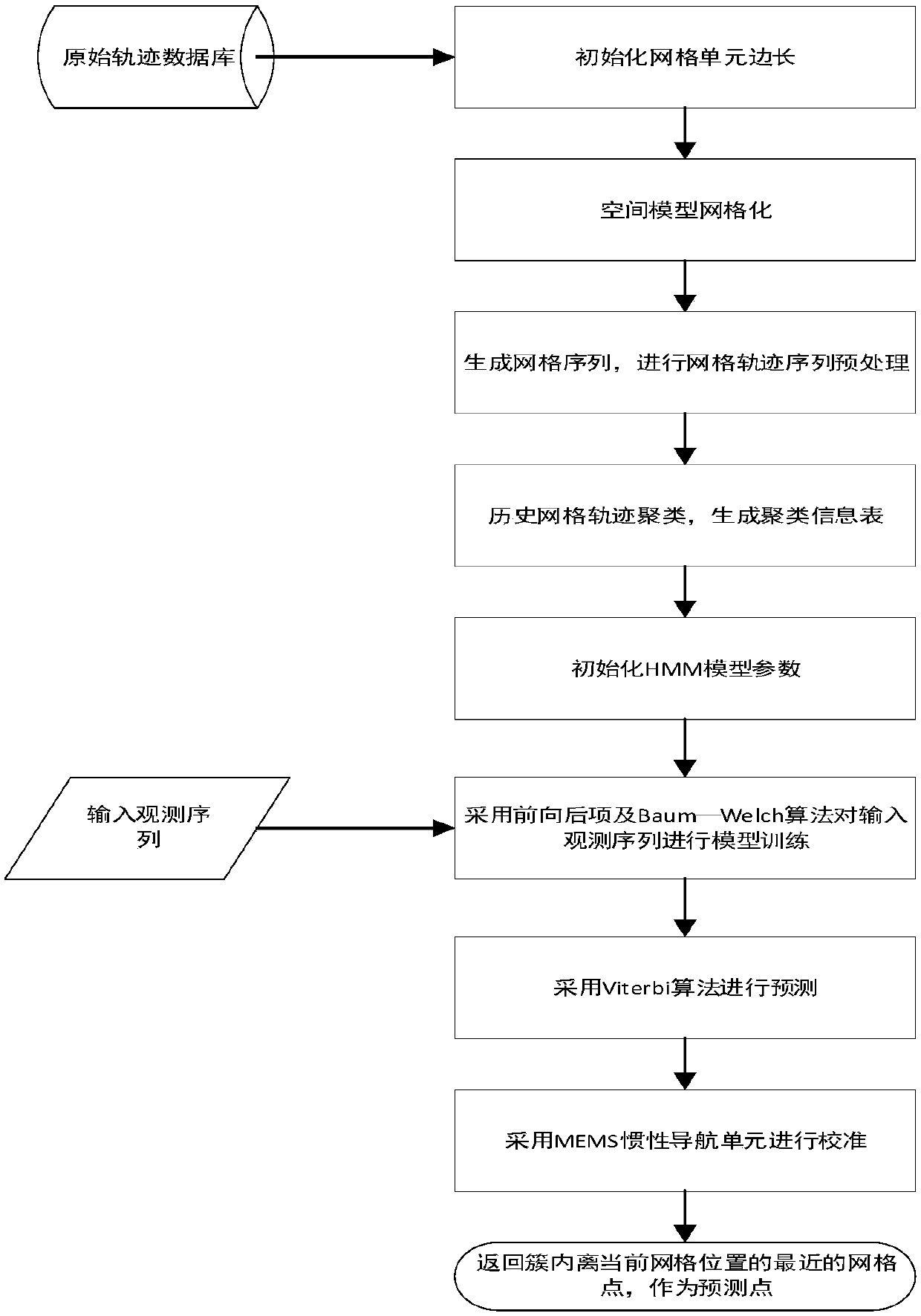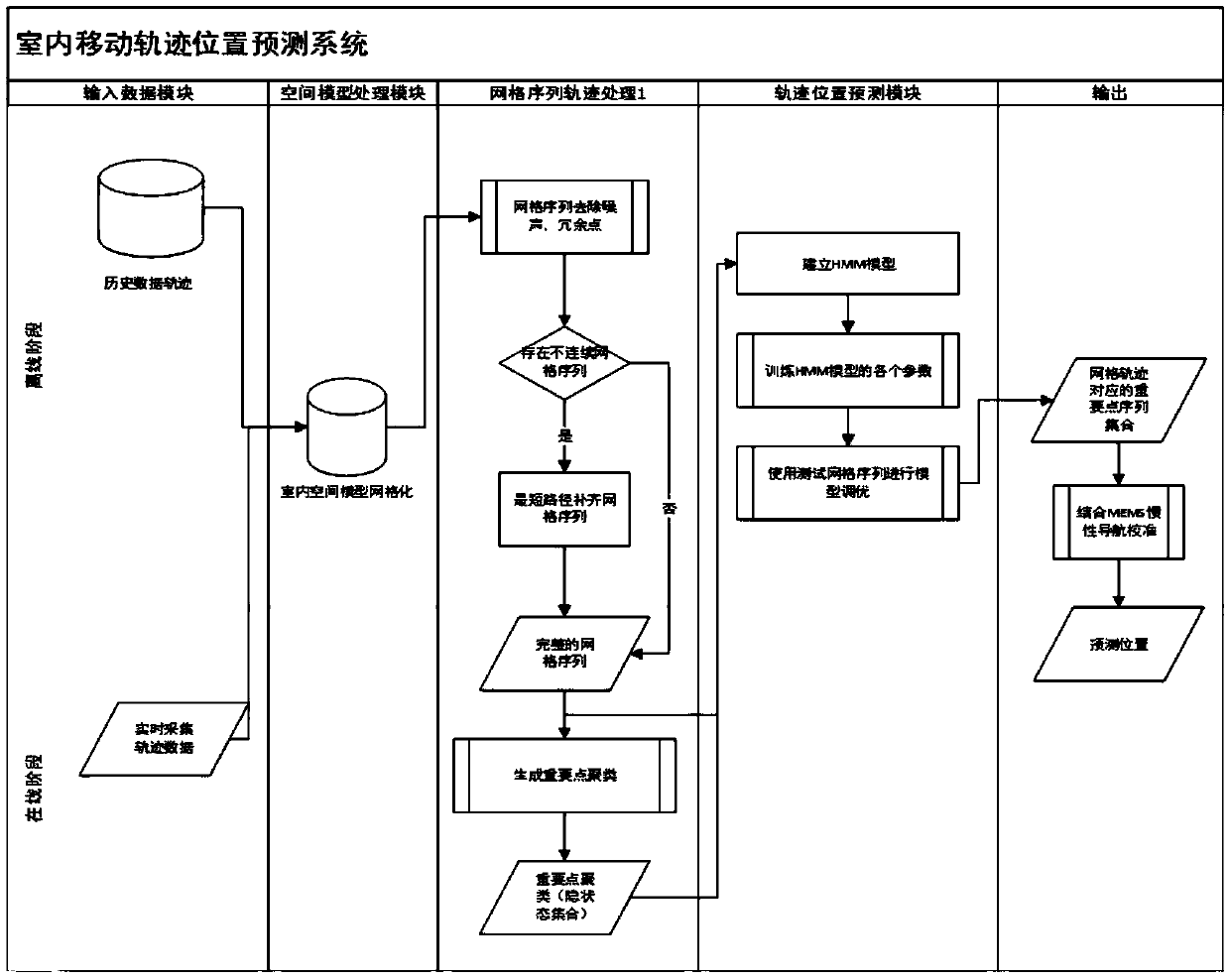Method for predicting indoor movement trajectory data based on HMM model
A prediction method and trajectory technology, which can be applied to services based on location information, services based on specific environments, etc., and can solve problems such as status stay, large differences in prediction progress, and large amount of calculation.
- Summary
- Abstract
- Description
- Claims
- Application Information
AI Technical Summary
Problems solved by technology
Method used
Image
Examples
Embodiment Construction
[0058] The present invention will be described in further detail below in conjunction with the accompanying drawings and embodiments.
[0059] This embodiment provides a method for predicting the position of a spatial movement trajectory based on an HMM model, the process of which is as follows figure 1 shown; the specific steps are as follows:
[0060] Step 1: Based on the historical trajectory data, calculate the side length of the grid unit in the indoor space, and grid the indoor space;
[0061] Step 1.1: The method of calculating the side length of the grid unit is: take the minimum distance between consecutive and non-repeating points of the historical trajectory sequence as the side length of the grid unit, and grid the indoor space model; in this way, grid projection is performed on the trajectory sequence It can improve the integrity of the trajectory sequence and avoid the improper selection of the side length of the indoor space grid unit, resulting in the loss of ...
PUM
 Login to View More
Login to View More Abstract
Description
Claims
Application Information
 Login to View More
Login to View More - R&D
- Intellectual Property
- Life Sciences
- Materials
- Tech Scout
- Unparalleled Data Quality
- Higher Quality Content
- 60% Fewer Hallucinations
Browse by: Latest US Patents, China's latest patents, Technical Efficacy Thesaurus, Application Domain, Technology Topic, Popular Technical Reports.
© 2025 PatSnap. All rights reserved.Legal|Privacy policy|Modern Slavery Act Transparency Statement|Sitemap|About US| Contact US: help@patsnap.com



